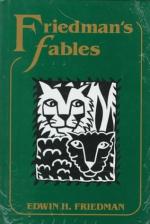|
This section contains 1,002 words (approx. 3 pages at 400 words per page) |

|
Point of View
The fables, the Interlude and the Epilogue are written from the third-person point of view. At times the narrative voice is omniscient, recounting the experiences of all the characters with an equal amount of detail and insight such as "Symbiosis," "Soaring," "The Power of Belief," and "Projection." At other times, the narrative voice focuses on the experience and perspective of a single character, making the point of view more limited such as "The Bridge," "The Friendly Forest," "Net Results," "The Magic Ring," "Cinderella," and "The Wallflower." In all cases, the narrative voice is describing events from a particular moral perspective as broadly defined by one of the collection's general themes and as specifically defined by one or more facets of those themes.
On another level, the authorial point of view is something different from the narrative point of view. While the latter primarily manifests in the...
|
This section contains 1,002 words (approx. 3 pages at 400 words per page) |

|




